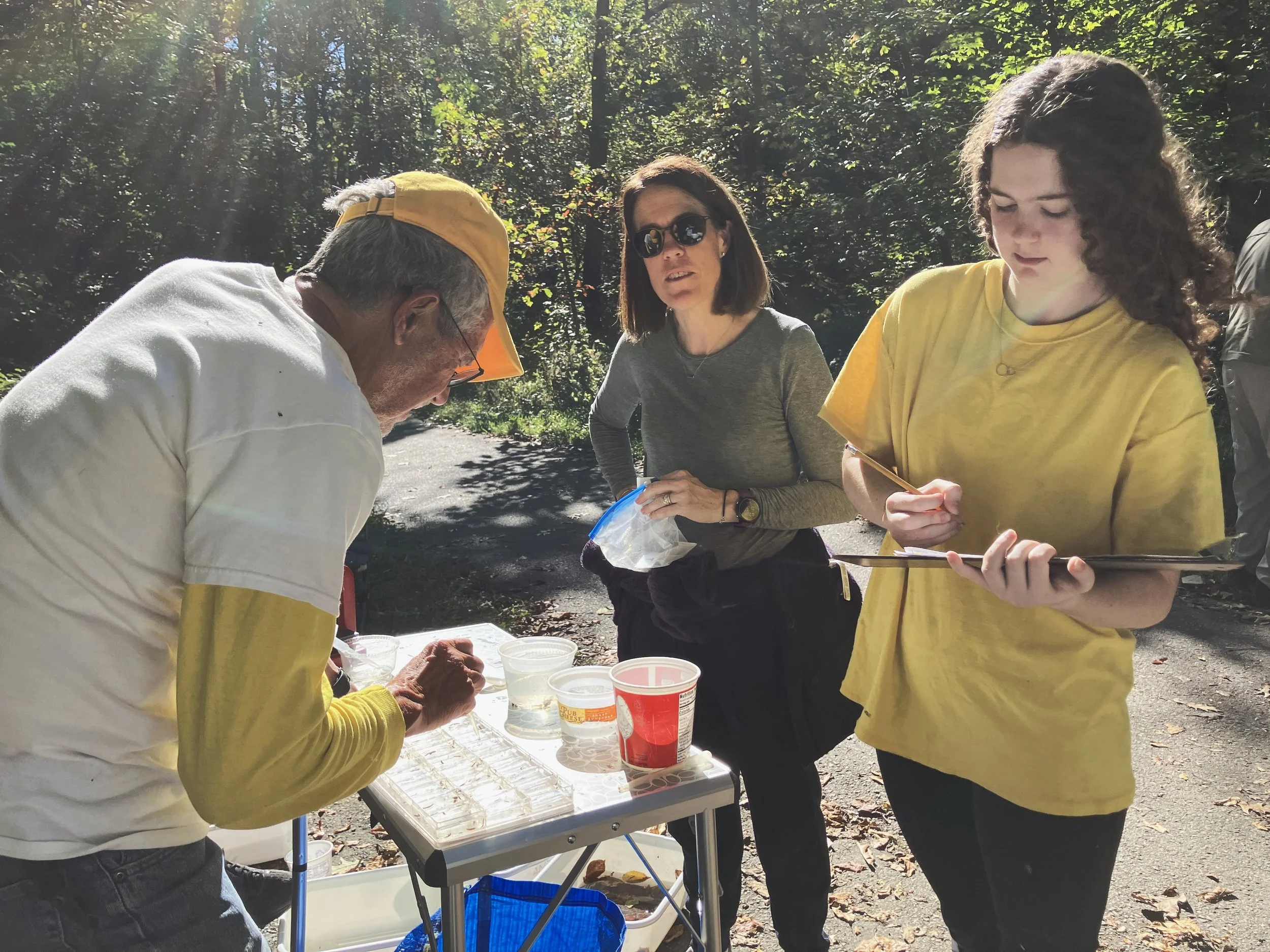On Saturday, October 18, our stream team did the fall sampling for benthic macroinvertebrates in the Little Falls Creek. For the second time this year, planaria were the star of the show accounting for more than half of the organisms we found. Black fly larvae were also found in abundance - 26% of the total count. We found eight different species in all, giving the creek BIBI score of 1.6 which puts it in the Poor category.
Stream Team leader Frank Sanford counts organisms with Emily and Averill Simone.
By sampling the creek for macroinvertebrates we are able to tell a lot about the biological health of the creek. The main things we look for are 1) species diversity and 2) pollution tolerance of the organisms we find. Greater species diversity generally means more interconnectedness and complexity within an ecosystem, allowing it to better withstand disturbances and maintain essential functions - thus a healthier stream. We also know that some species are more tolerant of pollution than others. So, if we are seeing only pollution tolerant species, we can tell that the stream is experiencing stress from some type of pollution.
What is the Main Pollution?
Our creek suffers from excess silting. When it rains, all the storm water run-off from the impervious surfaces goes directly to the creek. The volume and velocity of the rain water run-off causes severe erosion of the creek banks. The dirt from the banks covers the creek bottom and destroys the habitat that the macroinvertebrates call home. This sediment or silt - the tiny particles of dirt, sand, and clay floating in the water - may not seem like a big deal - it’s just dirt, but sediment is one of the major causes of decline in the health of our waterways and one of the primary pollution in the Chesapeake Bay. Besides burying the organisms that live on the bottoms of the creek and Bay, too much mud in the water blocks the sunlight needed for plant growth.
Storm Water Management to keep the rain from flooding the creek
One thing that residents can do to prevent flooding and erosion from storms is to keep their storm water on their property instead of directing it to the street and storm drain system. A dry well or a rain garden or pervious pavement driveway are all things that home owners can install to allow the water from their gutters and roofs to go into the ground instead of into the creek. Visit RainScapes.org for ideas and information about the rebates that Montgomery County offers for these types of projects.
Notes from the Field
From Stream Leader Frank:
With extremely low water and extremely high salt content - 330 PPM (not uncommon for Little Falls) we did have a "normal" collection at our site. One Narrow Winged Damselfly was somewhat unique and Sarah Morse is happy that our Cylindrical Leech population is alive and healthy!!
Leech - 2
Planaria -51
Aquatic sowbugs - 9
Black fly - 26
Tipulidae/tipula-4
Netspnners - 6
Small minnow/Baetis -6
Narrow winged damselfly – 1
This program is run in partnership with Nature Forward who trains our volunteers and provides equipment. To learn more about our team and past results, visit HERE. To join our team, contact us at info@LFWA.org. There is required training and one year commitment.


